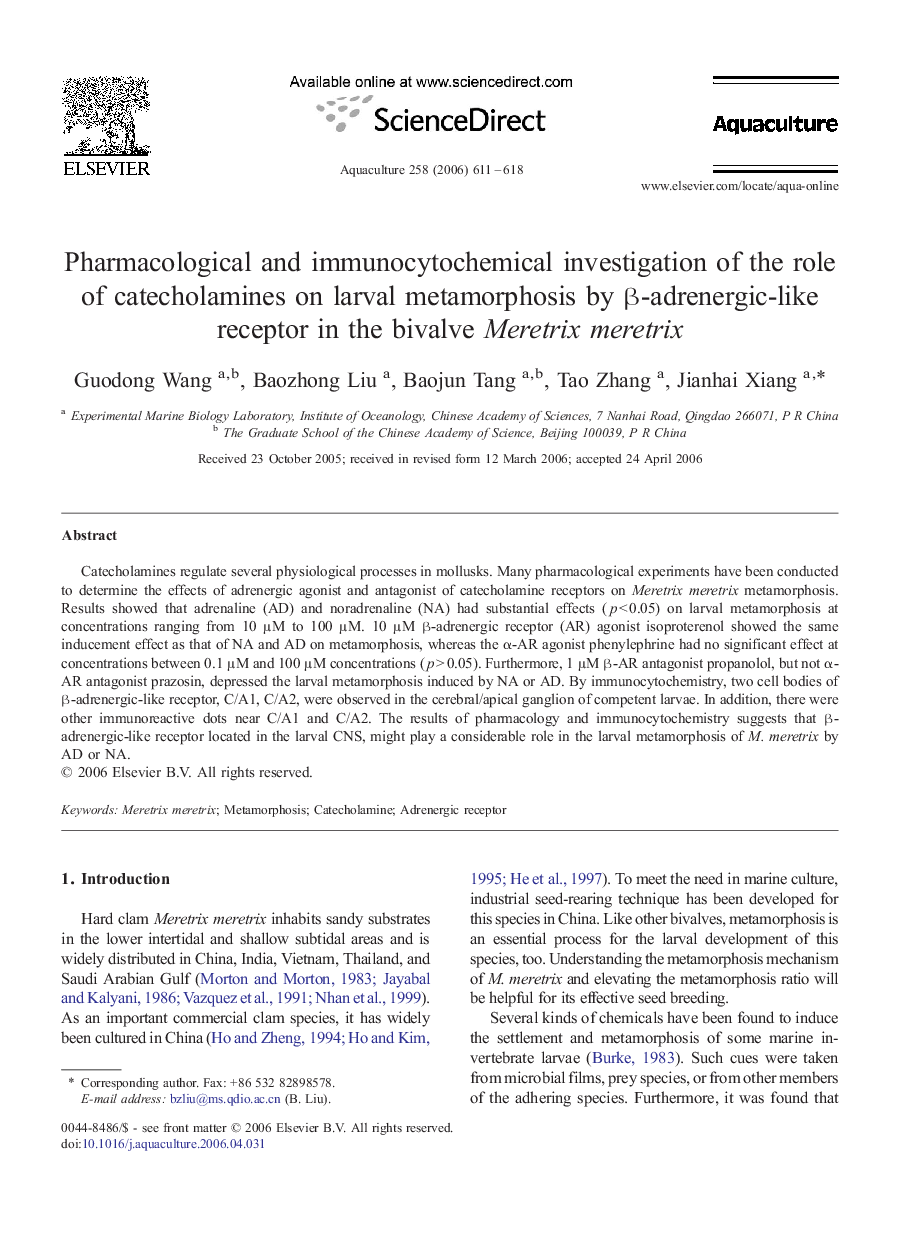| کد مقاله | کد نشریه | سال انتشار | مقاله انگلیسی | نسخه تمام متن |
|---|---|---|---|---|
| 2425879 | 1552983 | 2006 | 8 صفحه PDF | دانلود رایگان |

Catecholamines regulate several physiological processes in mollusks. Many pharmacological experiments have been conducted to determine the effects of adrenergic agonist and antagonist of catecholamine receptors on Meretrix meretrix metamorphosis. Results showed that adrenaline (AD) and noradrenaline (NA) had substantial effects (p < 0.05) on larval metamorphosis at concentrations ranging from 10 μM to 100 μM. 10 μM β-adrenergic receptor (AR) agonist isoproterenol showed the same inducement effect as that of NA and AD on metamorphosis, whereas the α-AR agonist phenylephrine had no significant effect at concentrations between 0.1 μM and 100 μM concentrations (p > 0.05). Furthermore, 1 μM β-AR antagonist propanolol, but not α-AR antagonist prazosin, depressed the larval metamorphosis induced by NA or AD. By immunocytochemistry, two cell bodies of β-adrenergic-like receptor, C/A1, C/A2, were observed in the cerebral/apical ganglion of competent larvae. In addition, there were other immunoreactive dots near C/A1 and C/A2. The results of pharmacology and immunocytochemistry suggests that β-adrenergic-like receptor located in the larval CNS, might play a considerable role in the larval metamorphosis of M. meretrix by AD or NA.
Journal: Aquaculture - Volume 258, Issues 1–4, 31 August 2006, Pages 611–618